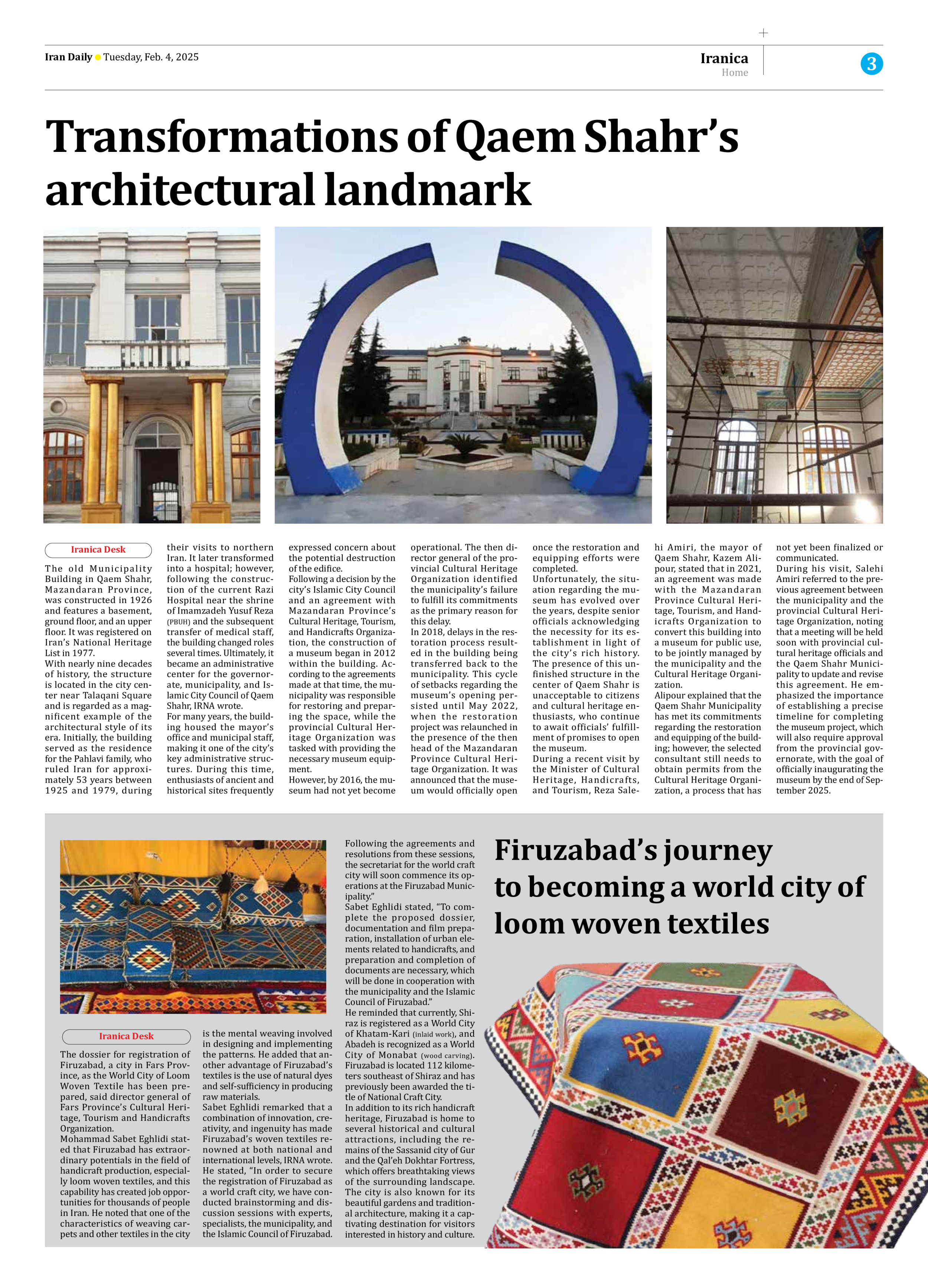
Transformations of Qaem Shahr’s architectural landmark
The old Municipality Building in Qaem Shahr, Mazandaran Province, was constructed in 1926 and features a basement, ground floor, and an upper floor. It was registered on Iran’s National Heritage List in 1977.
With nearly nine decades of history, the structure is located in the city center near Talaqani Square and is regarded as a magnificent example of the architectural style of its era. Initially, the building served as the residence for the Pahlavi family, who ruled Iran for approximately 53 years between 1925 and 1979, during their visits to northern Iran. It later transformed into a hospital; however, following the construction of the current Razi Hospital near the shrine of Imamzadeh Yusuf Reza (PBUH) and the subsequent transfer of medical staff, the building changed roles several times. Ultimately, it became an administrative center for the governorate, municipality, and Islamic City Council of Qaem Shahr, IRNA wrote.
For many years, the building housed the mayor’s office and municipal staff, making it one of the city’s key administrative structures. During this time, enthusiasts of ancient and historical sites frequently expressed concern about the potential destruction of the edifice.
Following a decision by the city’s Islamic City Council and an agreement with Mazandaran Province’s Cultural Heritage, Tourism, and Handicrafts Organization, the construction of a museum began in 2012 within the building. According to the agreements made at that time, the municipality was responsible for restoring and preparing the space, while the provincial Cultural Heritage Organization was tasked with providing the necessary museum equipment.
However, by 2016, the museum had not yet become operational. The then director general of the provincial Cultural Heritage Organization identified the municipality’s failure to fulfill its commitments as the primary reason for this delay.
In 2018, delays in the restoration process resulted in the building being transferred back to the municipality. This cycle of setbacks regarding the museum’s opening persisted until May 2022, when the restoration project was relaunched in the presence of the then head of the Mazandaran Province Cultural Heritage Organization. It was announced that the museum would officially open once the restoration and equipping efforts were completed.
Unfortunately, the situation regarding the museum has evolved over the years, despite senior officials acknowledging the necessity for its establishment in light of the city’s rich history. The presence of this unfinished structure in the center of Qaem Shahr is unacceptable to citizens and cultural heritage enthusiasts, who continue to await officials’ fulfillment of promises to open the museum.
During a recent visit by the Minister of Cultural Heritage, Handicrafts, and Tourism, Reza Salehi Amiri, the mayor of Qaem Shahr, Kazem Alipour, stated that in 2021, an agreement was made with the Mazandaran Province Cultural Heritage, Tourism, and Handicrafts Organization to convert this building into a museum for public use, to be jointly managed by the municipality and the Cultural Heritage Organization.
Alipour explained that the Qaem Shahr Municipality has met its commitments regarding the restoration and equipping of the building; however, the selected consultant still needs to obtain permits from the Cultural Heritage Organization, a process that has not yet been finalized or communicated.
During his visit, Salehi Amiri referred to the previous agreement between the municipality and the provincial Cultural Heritage Organization, noting that a meeting will be held soon with provincial cultural heritage officials and the Qaem Shahr Municipality to update and revise this agreement. He emphasized the importance of establishing a precise timeline for completing the museum project, which will also require approval from the provincial governorate, with the goal of officially inaugurating the museum by the end of September 2025.







